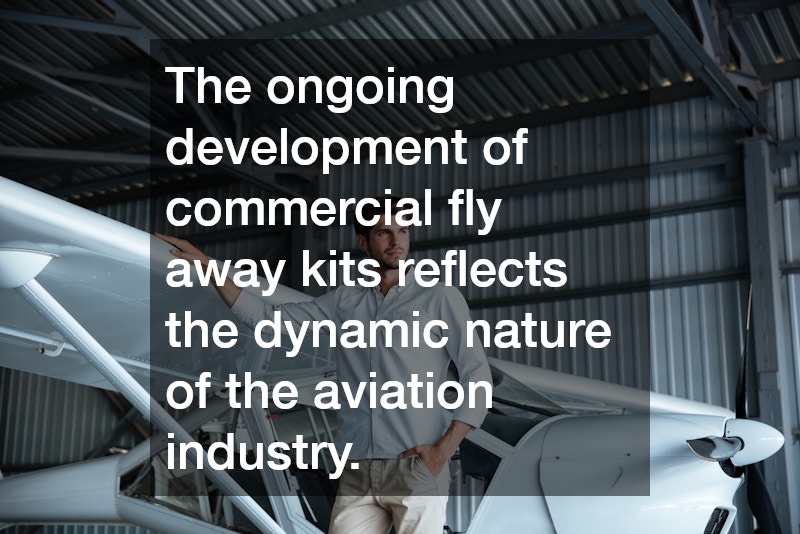In the fast-paced world of commercial aviation, preparedness is a cornerstone of success. An essential tool in ensuring readiness for unexpected scenarios is the fly away kit. These kits are meticulously curated collections of spare parts and tools that can be rapidly mobilized to support aircraft maintenance and emergencies. Their availability allows airlines and maintenance crews to reduce downtime, maintain safety standards, and ensure punctuality in operations. As the demand for rapid and efficient aircraft servicing grows, understanding the components of these kits becomes increasingly crucial.
Fly away kits are integral to minimizing operational delays and ensuring the reliability of commercial airlines. Consisting of various components, these kits enable quick fixes and maintenance, often in locations where full-scale support is not readily accessible. This ability to effectively respond to maintenance needs highlights the strategic value of fly away kits in an industry where timing and efficiency are paramount. Moreover, these kits are tailored to meet the unique requirements of each aircraft model, which necessitates an in-depth understanding of their composition. For those involved in aviation management, an appreciation of the intricacies of fly away kits is indispensable.
Key Components of Fly Away Kits
At the heart of any successful fly away kit are the spare parts that ensure operational continuity. These parts can range from basic items such as screws and bolts to more complex components like avionics and hydraulic system parts. The selection of these parts is based on the aircraft’s specific maintenance manuals and the anticipated likelihood of need during flight or at remote locations. Airlines and manufacturers collaboratively determine the inventory, ensuring that the fly away kits meet all potential requirements for different aircraft models. This strategic selection process underscores the importance of foresight in aviation maintenance.
Tools form another critical category within fly away kits, comprising both specialized and general tools necessary for servicing various aircraft systems. These tools include wrenches, pliers, ratchet sets, and multimeters, among others. The inclusion of such tools ensures that technicians can perform any necessary checks, repairs, or adjustments wherever the aircraft might be. Additionally, the compact design of these tools facilitates ease of transport and storage, maximizing efficiency when responding to maintenance needs. As maintenance tasks can vary greatly, the versatility of these tools is paramount.
Organizational Strategies for Effective Fly Away Kits
The organization of fly away kits plays a critical role in their effectiveness during real-time application. Efficient organization ensures that all components are readily accessible, which is vital in high-pressure scenarios where time is of the essence. Kits are usually compartmentalized and labeled, allowing for quick identification and retrieval of necessary items. Having a well-structured kit not only saves time but also reduces the potential for error during maintenance operations. Consequently, the meticulous organization of fly away kits is essential in minimizing aircraft downtime and enhancing operational efficiency.
Regular inventory checks and updates are fundamental to ensuring that fly away kits are always ready for deployment. Technicians often utilize digital management systems to track part usage and replenishment, thereby maintaining the integrity and readiness of the kits. These systems provide alerts when stock levels are low, facilitating timely restocking and reducing the risk of missing critical components. Regular audits of fly away kits enable teams to adapt to changing requirements and incorporate new components as needed. By staying proactive, maintenance crews can effectively handle a wide range of scenarios, including challenging emergency situations.
Future Trends and Technological Innovations
As the aviation industry advances, the evolution of fly away kits is inevitable, driven by technological innovations and changing maintenance requirements. New materials and advanced manufacturing techniques contribute to the development of lighter, more durable tools and parts. These advancements enhance the portability of fly away kits, making them more adaptable to different operational contexts and environments. Emerging technologies, such as 3D printing, hold the potential to revolutionize the replacement parts field, allowing for on-demand production of certain components. This innovation could significantly impact inventory strategies and diminish the logistical challenges associated with maintaining extensive kit inventories.
The integration of digital technologies into fly away kits represents another significant development in the field. The use of smart tools equipped with sensors and connectivity features enables real-time diagnostics and instant reporting back to maintenance hubs. These smart tools facilitate a higher degree of precision in maintenance tasks and support effective decision-making. By leveraging IoT (Internet of Things) technologies, fly away kits can evolve into dynamic systems that provide advanced data analytics for predictive maintenance. This progression could transform traditional maintenance practices and greatly enhance the overall resilience of airline operations.
The ongoing development of commercial fly away kits reflects the dynamic nature of the aviation industry. With a commitment to innovation and sustainability, these kits serve as essential tools in maintaining operational excellence and enhancing passenger safety. As airlines and maintenance teams continue leveraging emerging technologies, fly away kits will remain at the forefront of ensuring efficient and resilient airline operations. By investing in the evolution and integration of these kits, the aviation industry can confidently meet future challenges while maintaining high standards of performance and safety. The comprehensive understanding and effective application of fly away kits will undoubtedly contribute to a more connected and efficient global aviation network.


